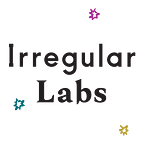Communication.JPG: The Bilingualism of Gen Z
Will this produce a more visually articulate generation? Charlotte, 20, New York City.
Fluid production is not limited to genre-jumping and collective networks. In the hands of our very pragmatic Gen Zs, it also involves frankensteining mediums, and surfing between the multitude of written and visual materials. Having grown up on Twitter, Instagram, Snapchat, and YouTube, Gen Zs have been trained to say less with words and more with images. The question is, has the limited word count and one second per post attention span encouraged Gen Zs to abandon proper sentence structure in favor of memes, gifs, and images? And will this produce a more visually articulate generation? What will this mean as they move into the professional world, colliding with older generations, and discovering that communicating your ideas and arguments is the difference between professional success and failure? Or, will Gen Z change the game? Charlotte Force helps us navigate Gen Z’s visual/textual bilingualism and hopefully shed some light on what it might mean for the future of communication.
My generation came into the world a little after the Internet, around the same time as email. We came of age, however, with digital photography and smartphones. Saddled with a saturation of visual media unprecedented in history — with terabytes of storage and unlimited data plans for $60 a month — how could Gen Z do anything else but use it for the most mundane, ubiquitous, and complex of human functions: communication.
The expressive explosion of language use online has accelerated, or at least amplified, the process of language change. Writing has always been accompanied by images. They are almost like an additional language that we are all fluent in. You’d have much greater success communicating the idea of “flower” to a stranger by drawing, than by speaking or writing in a language they don’t understand. And images are subtle in a different way than words, or at least, are worth a thousand of them. Images, ultimately, are like a language because they are a way we communicate. Our textual-visual bilingualism creates endless subtlety in practice. Emojis and GIFs are a crucial part of the 21st century’s textual-visual era of language. Take the example of a humble, single emoji. It operates on many levels: the literal sense, like an apple emoji which can simply denote the fruit. But the figurative sense of an emoji is open for interpretation. I have spent non- trivial time analyzing the addition of a red heart to the end of an iMessage, or the placement of a smiley face, in the way that an academic might read between the lines of a poem.
More than a reduction of “proper” language, I see the pervasiveness of images in our communication as an actualization of our textual- visual bilingualism. Thanks to Google Photos, my emoji keyboard, the Bitmoji app, and Snapchat, I always have a shortcut to communicate both visually and textually. Gen Zs has native fluency in both means of communication. As with any native bilingualism, we can switch between means, or mix them naturally. In the same way that an expression can’t translate properly between French and English, the feeling evoked by a GIF can’t be translated into words.
With our fluency in text and images comes an awareness of when to use them, we experience the ambiguity of images day-to-day. We know exactly how abbreviations, like Twitter’s 140 character limit, reduce meaning; how distracted communication, like Snapchats that disappear after ten seconds, reduce attention span. But we operate on a basis of necessity — a 3:00 a.m. tweet about your zodiac sign doesn’t need to be your magnum opus. We don’t say less with words because of images. We choose what to say with words, and with images, and with a blend of both.
Being articulate in melding words and images has not taken away our ability to choose when we include images or abbreviate our ideas. We are constantly assessing the ambiguity of images, dealing in varied mediums of communication simultaneously, and sorting through reams of information. I think it’s made us creative, communicative, and adept multitaskers. If anything, I think the known benefits of bilingualism can be attributed to the textual-visual bilingualism of Gen Z. We know how to mode-switch between varying degrees of visual imaging when we communicate. I don’t use emojis in work emails, but I use a lot of smiley faces in texts to my friends — and sometimes it is fun to add a relevant New Yorker cartoon to the end of a class presentation.
